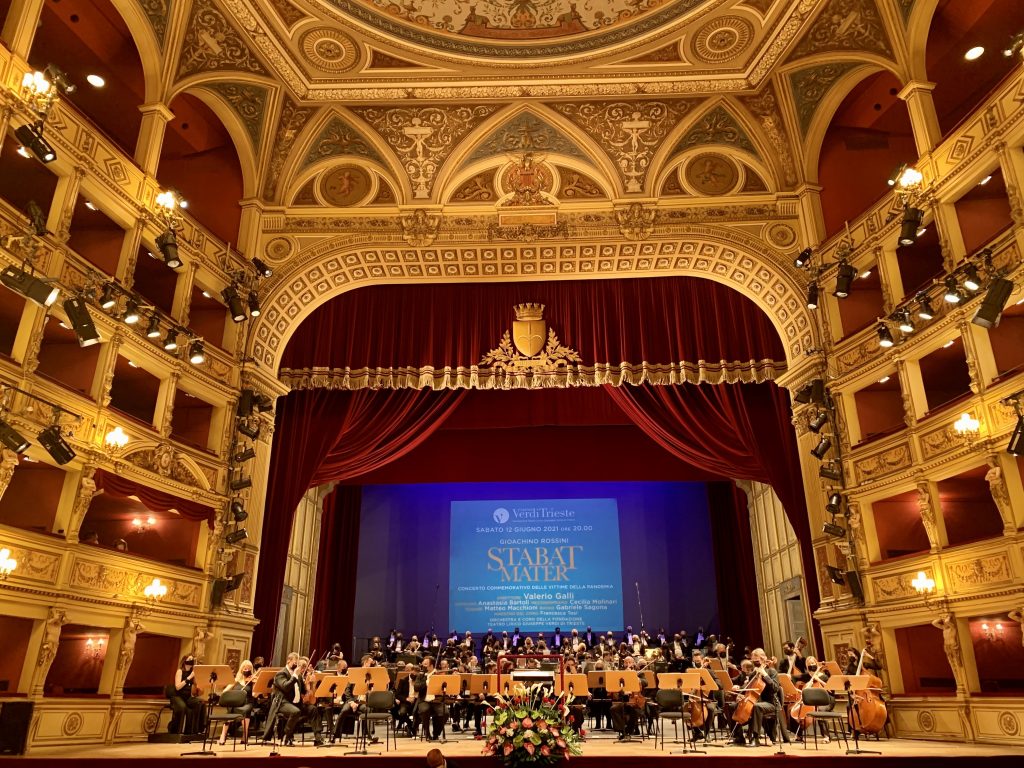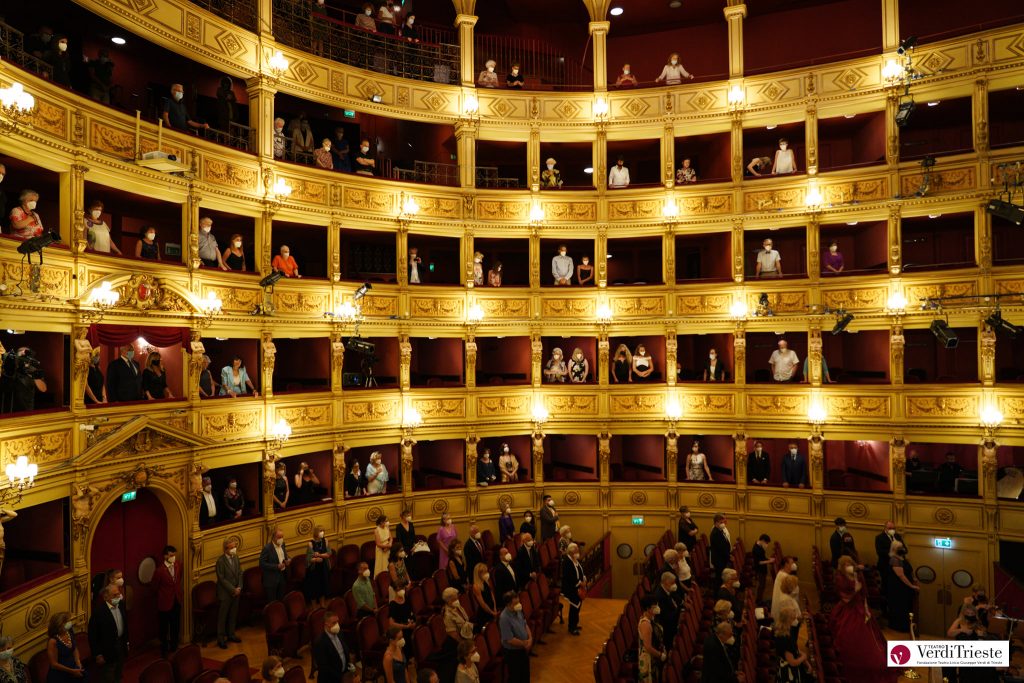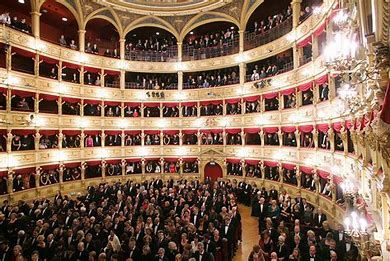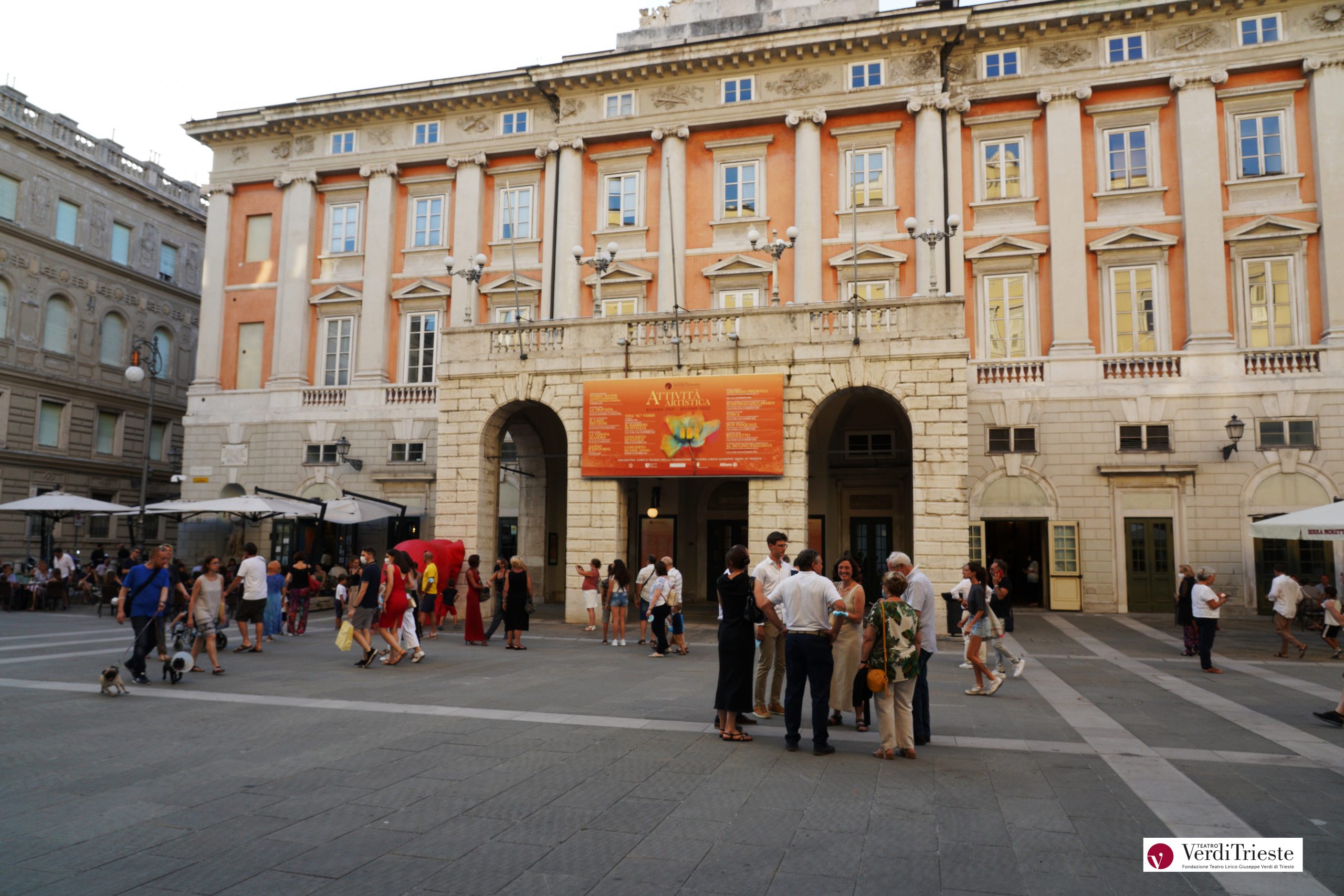by InTrieste
Everyone in Trieste knows Teatro Lirico Giuseppe Verdi opera house that was named after the famous composer, but few know it wasn’t always called that.
Privately constructed, it was inaugurated as the Teatro Nuovo on April 21, 1801, and replaced the smaller 800-seat Cesareo Regio Teatro di San Pietro. It opened to a performance of Johann Simon Mayr’s “Ginevra di Scozia”. Initially, the Nuovo had 1,400 seats, and in 1821 became known as the Teatro Grande.

By the end of the 18th century, the need for a new theater in Trieste became evident. Its main theater, the Teatro di San Pietro, had become increasingly inadequate and finally closed its doors in 1800. A proposal to the Austrian Chancery from Giovanni Matteo Tommasini to build a private theater had existed since 1795.
In June 1798, a contract was drawn up whereby annual funding would come from the municipality and Tommasini would hold the rights to several boxes and the rights to sell others. Gian Antonio Selva, the architect of the La Fenice in Venice, was engaged, and he designed a classic horseshoe-shaped auditorium.

However, Selva’s exterior designs were considered too plain for the Austrians who then engaged another architect, Matteo Pertsch, to solve the problem. He accomplished this by incorporating elements of Milan’s La Scala opera house. The “Nuovo” became a mixture of La Fenice on the inside and La Scala on the outside.
The theater was the site of two Verdi opera premieres: Il Corsaro in 1848 (featuring the soprano Giuseppina Strepponi, in the leading role, and whom Verdi married in 1859,) and Stiffelio, an 1850 production which Verdi supervised, albeit not without controversy. However, before these premieres, Verdi’s operas had begun to dominate the Teatro Grande’s stage, followed by all the major works of the opera repertoire, including those by Puccini and Wagner.

A further name change to Teatro Comunale followed in 1861, due to a switch from private to public ownership. It stayed as this throughout the latter years of the 19th century. By 1881, seating capacity had been increased to 2,000 through the use of existing standing room spaces; but, by that December, the theater was declared unsafe and was closed for renovations. During that time electricity replaced gas lighting for the reopening in 1889 with 1,000 seats.
Within hours of Verdi’s death, in January 1901, the theatre was once again renamed in his honour. Extensively restored from 1992—1997, with about 1300 seats, it re-opened with a Viva Verdi concert which included excerpts from many of the composer’s operas.
Like the restoration of La Scala between 2001 and 2004, a temporary alternative venue was quickly created in Trieste at the Sala Tripcovich, which continues to offer space for chamber opera and operettas.
A major feature of the Teatro Verdi’s programming over the past 40 years has been the “International Festival of Operetta” which takes place every summer. This stems from the original Austrian occupation of the city in the 19th century and the fact that Trieste did not become part of Italy until 1918.
The theater has seen many world opera premieres, and in addition to Ginevra di Scozia by Simon Mayr, the public heard Annibale in Capua by Antonio Salieri on May 20, 1801. This past season “Amorosa Presenza” was the latest world opera premiers in Verdi.





























